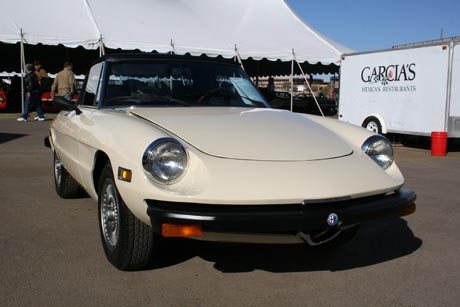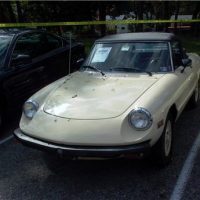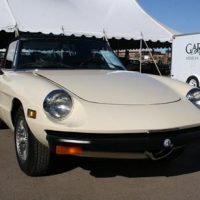
There was a time in the late ‘80s when I was gainfully unemployed.
I had left my job as Sales Manager at Ron Tonkin Grand Turismo and decided to make my living buying, fixing up and selling Alfa Romeos. At that time there was no shortage of non-running but not-yet-decrepit Alfas from the ‘70s lurking in garages and fields around the Pacific Northwest.
My specialty was to run ads in the “Nickel Ads” saying something like, “Are you tired of that stupid old sports car taking up space in the garage? Call me, I’ll pay you a fair price running or not, and haul it out of there today.”
I probably ended up with 15 or 20 cars over the course of two years. Most of the time, the problems were simple things like closed up points. The complexities of the Spica fuel injection were beyond my capabilities, so I would have a “real mechanic” look at those.
I paid $350 to $500 for these cars, and generally doubled my money — not counting my time and labor, of course.
I figured it was better than working at a bank as a clerk (or today as an Uber driver), and I ended up with a pretty fair stash of spare parts as well. I still have some of those parts today, and they’re as useless today as they were then. Anyone want a complete three-shoe-front-brake suspension that fits an Alfa Romeo SZ?
One memorable car was a 1978 Spider, cream over tan, that I dragged home from an Indian reservation. It had a badly blown headgasket. So badly blown, in fact, that I recall working on it in my driveway for nearly a week. It was summer and the sun was shining so it wasn’t so bad.
I had never come across a head so firmly attached to an engine block. I recall getting plastic wedges like you use when splitting wood, and finding the tiniest openings between the head and the block and driving them in just a little.
After a day or so, I had five of these wedges in place, and I would methodically go around the car, tapping one after another until, lo and behold, the head began to move.
By the end of day four, I had managed to get the head free.
Two days later, I had slapped on a fresh headgasket, put the engine back together and I had a runner. I think I sold it for $500.
More important than the money were the feelings first of “competency” (I actually knew how to repair something) and second of “resurrection.” (I had taken a car that had been left for dead and brought it back to life.
I doubt I will ever pull the head on an Alfa again, but I will always remember those times I brought a car out of the weeds and put it back on the highway. It was a small triumph, but it was my triumph.


Hi Keith, great story, reminds me of the bug eyed sprite i bought with a ‘ rod knock’ in 1968 for $150 ,car looked great in red..drove home and pulled engine in back yard by hand with 2 buddies and tossed it on our picnic table ( also in the summer time) the rod knock wound up being the crank ,which came out in two pieces! 3 weeks later one of my best friends sold his studebaker lark bought the bugeye for $500…felt like i made a home run and gave me extra $ to keep my MG Twin Cam running…We Had Fun didn’t We…Chuck Coli
Reminds me of a 1972 Triumph Spitfire with 24,000 miles that I bought off Craigslist with a “bad clutch”. One day the clutch pedal went to the floor and so the owner just left it parked in the garage. Years later he decided to get rid of it and I picked it up for $400. Fixing the clutch was simply replacing a vertical pin that held the throw-out bearing fork in place. The Brits somehow figured driving a pin in from the bottom of the fork so that it could fall out one day was better than designing it to be driven in from the top. I ended up with a beautiful low mileage Spitfire that I enjoyed for a year and then sold for $1400. I still regret selling that car…
Nice story. Alfa romeo’s are great cars, but can rust quick. I’ve worked on many Puch and Tomos mopeds, most not running, and indeed it gives a great feeling hearing them come back to life, such a joy to ride those nifty fifties. Keep ‘m rolling!